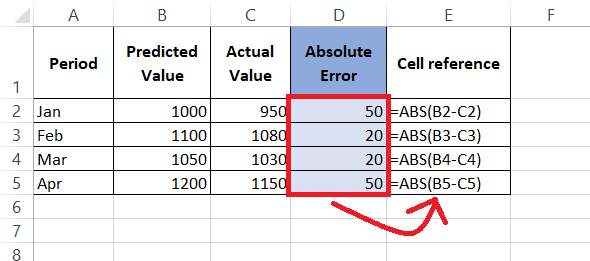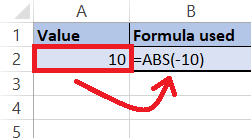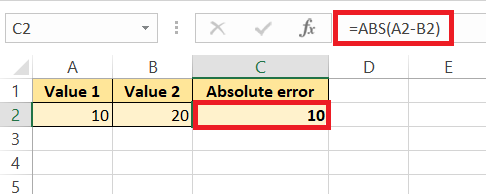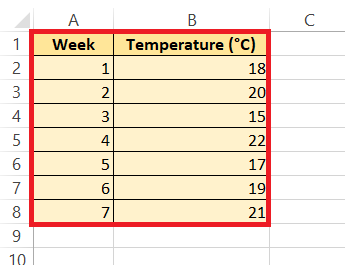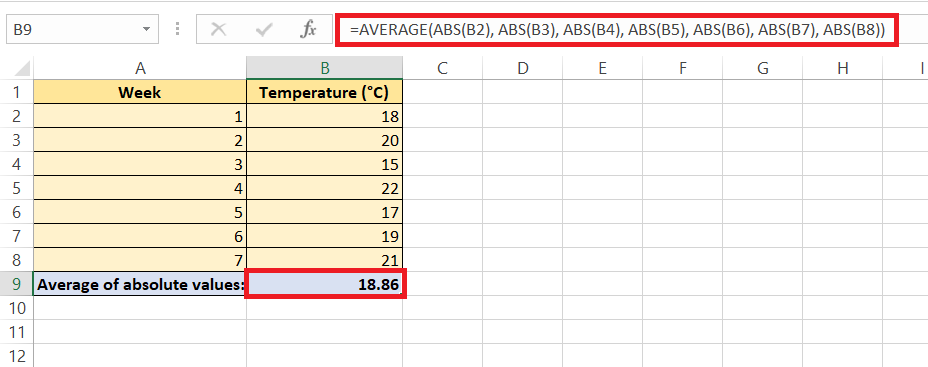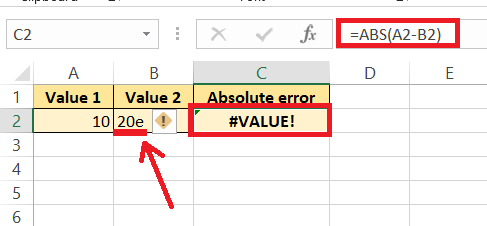- Understanding Absolute Value: Absolute value in Excel is the non-negative value of a number, crucial for unbiased data analysis.
- ABS Function Syntax: The ABS function requires a single input, converting any negative number to positive while retaining positive numbers as is.
- Practical Applications: Use the ABS function to convert negative values to positive in calculations, ensuring accurate summing and averaging of data.
- Error Handling: Common issues with summing absolute values include non-numeric data and incorrect cell references, both of which can be mitigated with careful checking.
- Advanced Uses: Combine the ABS function with other Excel functions like IF and SUMIF to handle more complex scenarios, enhancing the depth and reliability of your data analysis.
Table of Contents
Introduction to Mastering Absolute Value in Excel
Embracing the Essence of ABS Function
Delving into the world of Excel, you’ll quickly find that understanding the absolute value of numbers can be a game-changer in data analysis and calculations. The absolute value, simply put, is the non-negative value of a number, regardless of its original sign.
Now, let’s get familiar with the ABS function—an indispensable tool in Excel that helps you tap into the real magnitude of numbers by stripping away their sign.
Relevance of Absolute Value in Data Analysis
When you’re juggling data, the importance of absolute values cannot be overstated—they’re pivotal in various analytical tasks. For example, while assessing financial forecasts, you’ll often compare actual outcomes with predicted ones. Here is where absolute values enable a clear-cut measure of discrepancies, focusing purely on the size of errors without mixing in the direction of deviation.
Similarly, in sports analytics, calculating average deviations in athletes’ times or scores using absolute values can provide insights into their consistency. Think of absolute values as the analytical world’s way of keeping an unbiased eye on performance and prediction accuracy.
Diving Deep into the ABS Function
The ABCs of ABS Function Syntax
Diving into the nitty-gritty of the ABS function, its syntax couldn’t be more straightforward. It requires just one input: ABS(number). Here, “number” is the placeholder where you input the real number you’re eager to convert to its absolute value.
Remember, the ABS function is like a friendly neighborhood magician—it effortlessly transforms any negative number into its positive counterpart, ensuring your data stays non-negative and ready for action.
Understanding the Return value
The prowess of the ABS function lies in its consistent reliability; it’s a promise that whatever numeric value you feed it, a positive version will always be returned. Think of it almost like a mirror that only reflects the good side
If you enter ABS(-42), it gives you 42 with a cheery smile. Hand it ABS(42), and it says, “Looks perfect to me!” by returning 42. The ABS function embraces numbers as they come, but it always sends them off on a positive note.
Practical Applications of ABS Function
From Negative to Positive: Converting Numbers
In the Excel universe, turning negative vibes (or values) into positive ones can be as simple as wrapping your formula in the ABS function. Imagine you’re calculating the difference between two figures, and you want to make sure you’re only dealing with the upbeat positives.
Wrap that minus in some ABS function warmth, =ABS(A2-B2), and watch the negativity turn into positivity. Zero and positive numbers get to keep their identity, while negatives get a sunny makeover.
Summing and Averaging with Absolute Values
Now step into the world of summing and averaging like a math maestro. With absolute values, summing becomes a breezy affair, ensuring distances or discrepancies are measured without the hassle of directionality. And when it comes to averages, ABS keeps things fair and square.
To average absolute values, you’d nest ABS within the AVERAGE formula, like this: =AVERAGE(ABS(cell1), ABS(cell2), ...). This gives you the mean distance from zero, a handy data point whether you’re tracking stock market swings, a student’s grade deviations, or the fluctuation in daily temperatures.
STEP 1: Enter your data into Excel with weekly temperature values in a column.
STEP 2: Calculate the average of absolute values using the formula: =AVERAGE(ABS(B2), ABS(B3), ABS(B4), ABS(B5), ABS(B6), ABS(B7), ABS(B8)). Observe the result, which represents the average absolute variation from the zero point, providing a clear metric of temperature fluctuation.
Error-Proof Your Formulas
Troubleshooting Common Issues in Summing Absolute Values
Navigating common issues with summing absolute values in Excel can sometimes feel like a tricky puzzle.
- One potential hiccup is encountering non-numeric data, which Excel meets with a furrowed brow and a #VALUE! error. Ensure each cell within your range is a number, as the ABS function only speaks ‘numeric’.
- Another obstacle might be improper cell references leading to the infamous #REF! error. Double-check your cell addresses and keep an eye out for those that have gone AWOL.
By resolving these challenges, you ensure your summing sails smoothly.
Ensuring Accuracy in Your Absolute Value Calculations
Precision in Excel is as vital as needles for a tailor. To ensure that your absolute value calculations are as reliable as a sunrise, take a few precautionary steps. Employ the ABS function with confidence but double-check your range to avoid accidental omissions or additions of cells.
Why not take a test drive with known values to verify the formula’s behavior? It will reveal any mismarks before they cause a domino effect in your computations. And, if you’re ready to graduate to more complex summing scenarios, websites like ExcelJet serve as an invaluable resource with a portfolio of examples and guidance.
Developing Proficiency with Advanced ABStactics
Once you’ve got the hang of the basics, it’s time to level up your Excel skills with some advanced ABS strategies. Combine the ABS function with others to wield its full power. Get creative: how about adjusting financial models with =IF(ABS(net_profit) < acceptable_variance, "Good", "Review")? Or maybe summing only the positive deviations in a dataset with a dose of SUMIF? =SUMIF(range, ">0", ABS(range)) will gather those for you. These ABStactic maneuvers elevate your spreadsheets from data storage to insightful analysis tools.
FAQs
How do you make a value absolute in Excel?
To make a value absolute in Excel, simply use the ABS function. Type =ABS( followed by the number or cell reference you want to convert, and close the parenthesis. For example, =ABS(-10) or =ABS(A1) will both give you the absolute value, ensuring it’s positive.
What is the significance of the absolute function in Excel?
The ABS function is crucial in Excel for its ability to strip away the sign of a number, providing a pure measure of magnitude. This is essential across various fields like finance, engineering, and data analysis, where the size of a value matters more than its direction – whether you’re calculating financial risk or statistical variances.
Can you provide an example of how to use absolute cell references effectively?
Certainly! If you’re preparing a sales commission report and the commission rate is in cell C1, you’d use an absolute reference to ensure the rate remains constant. In cell D2, you might enter =B2*$C$1 to calculate the commission for the first sale amount in B2. Copy this formula down the column, and the reference to C1 stays intact, accurately applying the same commission rate to all sales entries.
When should you use the ABS function in real-life scenarios?
You’d use the ABS function in real-life scenarios where the focus is on the size of a number, not its sign. For instance, calculating the absolute difference between projected and actual sales figures, assessing temperature changes regardless of the direction, or managing inventory levels where only the quantity matters, not whether it’s an increase or decrease. It’s about measuring impact without the distraction of direction.
What is the symbol for absolute value in Excel?
The symbol for absolute value in Excel isn’t a special character; instead, you use the ABS function. For example, =ABS(-20) converts -20 to 20. To refer to cell references absolutely in formulas, use the dollar sign ($), such as $A$1, which locks the column and row, keeping the reference constant when copied.
John Michaloudis is a former accountant and finance analyst at General Electric, a Microsoft MVP since 2020, an Amazon #1 bestselling author of 4 Microsoft Excel books and teacher of Microsoft Excel & Office over at his flagship MyExcelOnline Academy Online Course.

